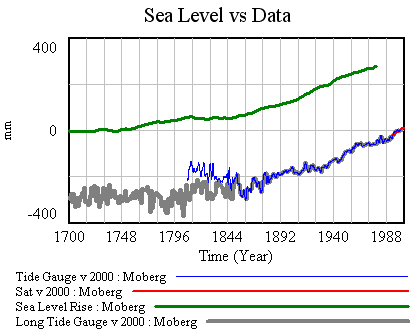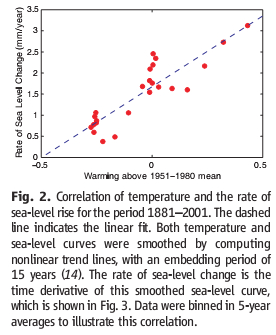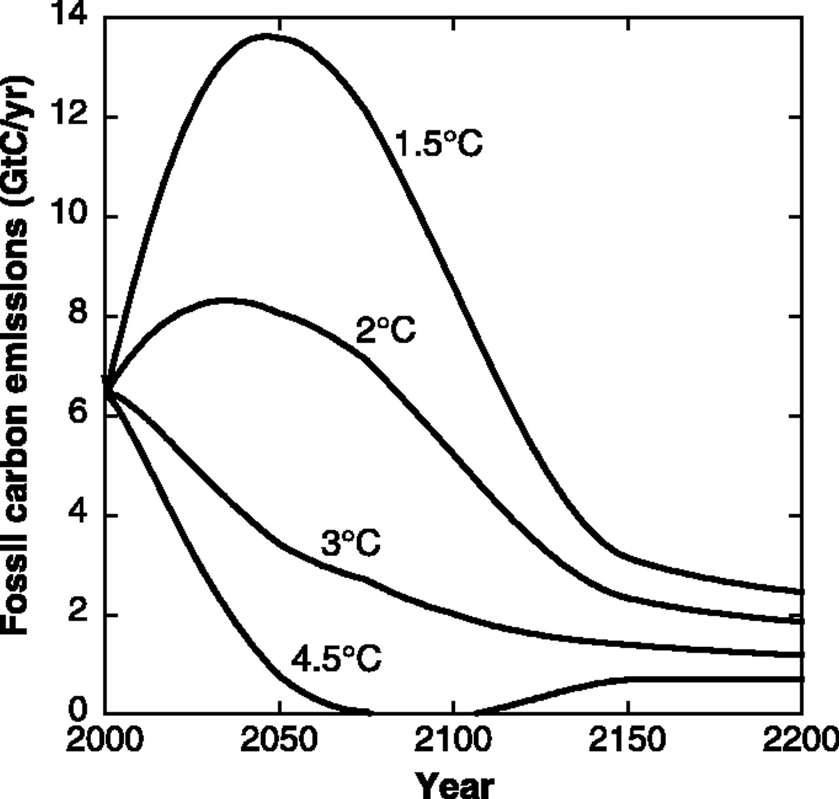So far, I’ve established that the qualitative results of Rahmstorf (R) and Grinsted (G) can be reproduced. Exact replication has been elusive, but the list of loose ends (unresolved differences in data and so forth) is long enough that I’m not concerned that R and G made fatal errors. However, I haven’t made much progress against the other items on my original list of questions:
- Is the Grinsted et al. argument from first principles, that the current sea level response is dominated by short time constants, reasonable?
- Is Rahmstorf right to assert that Grinsted et al.’s determination of the sea level rise time constant is shaky?
- What happens if you impose the long-horizon paleo constraint to equilibrium sea level rise in Rahmstorf’s RC figure on the Grinsted et al. model?
At this point I’ll reveal my working hypotheses (untested so far):
- I agree with G that there are good reasons to think that the sea level response occurs over multiple time scales, and therefore that one could make a good argument for a substantial short-time-constant component in the current transient.
- I agree with R that the estimation of long time constants from comparatively short data series is almost certainly shaky.
- I suspect that R’s paleo constraint could be imposed without a significant degradation of the model fit (an apparent contradiction of G’s results).
- In the end, I doubt the data will resolve the argument, and we’ll be left with the conclusion that R and G agree on: that the IPCC WGI sea level rise projection is an underestimate.




